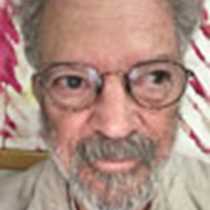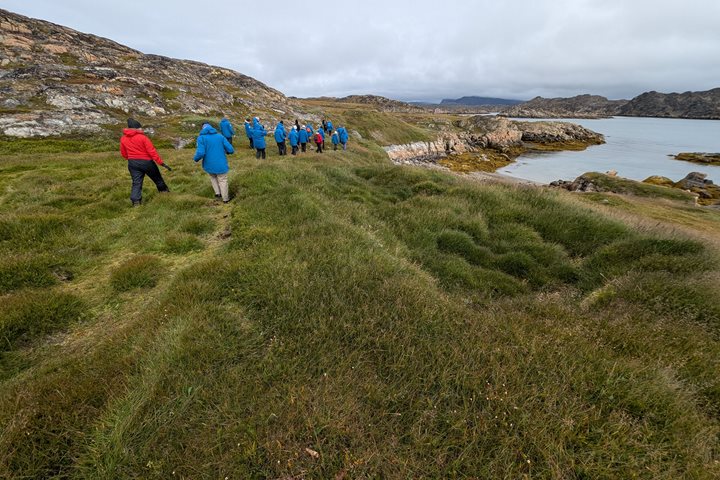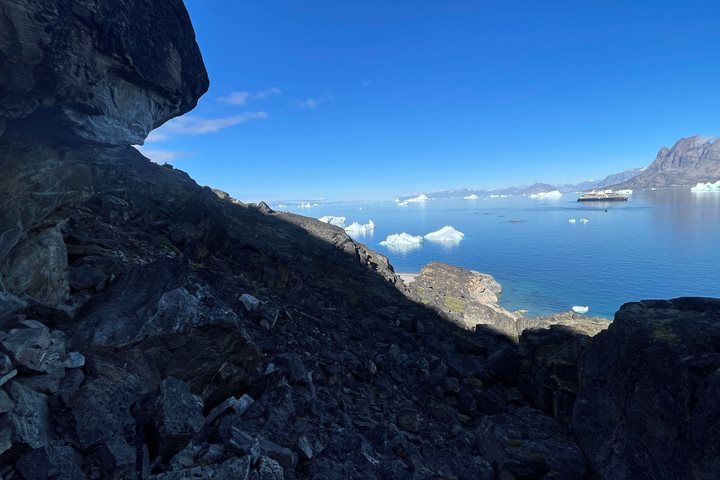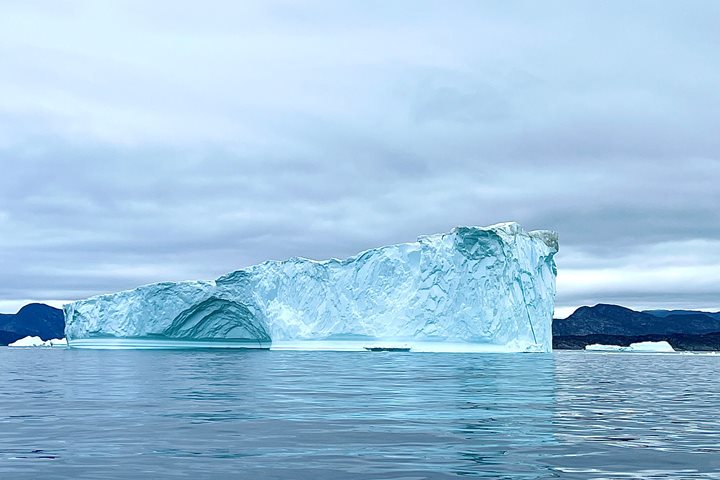It is early morning with bright skies and a bit of wind. We are at Qeqertarsuaq, or the Large Island, the largest of Greenland’s nearshore islands. The island is better known as Disco Island to the rest of the world. The name comes from the Danish Diskoøen, meaning Disco Island since the island is shaped like a disk!
A few large icebergs hang about, and the land looks both verdant and barren. There is less than a quarter mile of plain before a bluff is reached, its walls cut by cascades and waterfalls. The plain undulates slightly. The peaks are mostly covered with moss and lichens, and the valleys are blanketed with dwarf willows and birch. The scenery here is extraordinary! Swaths of cobbles collected by the ice are populated by rootless moss and lichens of various types and colors, and to the side we spot a Lilliputian forest of wood and herbs.
We are in the Arctic, where the ice rules. Much of the land is covered in ice, and all of the earth is embedded in ice, or permafrost. Permafrost can move the rocks and collect them in one place. It can cause the land to slump when the wet, thin layer of summer-thawed earth slides over the permafrost below. You can see permafrost on the slopes. It looks like poorly solidified gelatin on a tilted tray. Every summer, the top of the permafrost (what we walk on) thaws. This is the active zone, where plant roots live. The land is unstable but certainly not unnatural. It is easily cleaved by water, creating canyons, cascades, and waterfalls. As we walk, we see the tracks of fox, reindeer, and geese. It is a wild place.
In the afternoon, we take to the Zodiacs and explore a sea with sculptures of ice. Some are dirty, some clear. Some small, some huge. All are beautiful, and I might say magical. Today is another day, as new and wonderful as any day can be.
Photo caption and photographer: Disco Island. Photo by Dennis Cornejo







